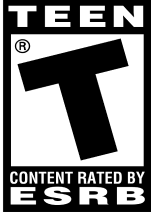Apple App Store App Content Rating Statistics 2025
At 42matters, we track content rating insights for iOS apps available on Apple App Store. This includes Apple App Store's native content rating system, as well as global systems like PEGI, USK, ESRB, ACB, ClassInd, IARC, and GRAC.
This article provides Apple App Store app content rating statistics updated in near real-time. It defines the various global systems and covers a number of content rating use cases for Ad Networks, parental control apps, and more.
Data Source: 42matters
At 42matters, we take a holistic approach to mobile and connected TV (CTV) app intelligence. We track app metadata, performance metrics, technical specifications, strategic insights, and more. If you would like to leverage our data for your own products, processes, or research, you can access it via our APIs, File Dumps, Explorer, and SDK Explorer.
Contact Sales
How is iOS App Content Rated?
In order to receive a content rating for an iOS app on the Apple App Store, developers must fill out a content rating matrix on iTunes Connect as they are preparing the app for publication. This matrix consists of ten content-related questions. Depending on the answers provided, the app will be placed into one of the following four age-based categories:
- 4+: The app contains no objectionable material. 4+ has three sub-classifications:
- Made for Ages 5 and Under - This app is suitable for children aged 5 and under, but people aged 6 and over can also use this app.
- Made for Ages 6 to 8 - This app is suitable for children aged 6 to 8, but people aged 9 and over can also use this app.
- Made for Ages 9 to 11 - This app is suitable for children aged 9 to 11, but people aged 12 and over can also use this app.
- 9+: The app may contain content unsuitable for children under the age of 9. This includes mild occurrences of cartoon, fantasy, or realistic violence, and some mature, suggestive, or horror-themed content. 9+ has one sub-classification:
- Made for Ages 9 to 11 - This app is suitable for children aged 9 to 11, but people aged 12 and over can also use this app.
- 12+: The app may contain content unsuitable for children under the age of 12. This could be frequent cartoon, fantasy, or realistic violence; some mature or suggestive themes, occasional bad language, or simulated gambling.
- 17+: The app may contain content unsuitable for persons under the age of 17. This could mean frequent offensive language, excessive cartoon, fantasy, or realistic violence; mature, horror, or suggestive themes; sexual content, nudity, alcohol, and drugs; or any combination thereof. This includes apps with unrestricted web access. No one aged 16 and under is allowed to purchase an app rated 17+.
Finally, it should be noted that all apps sold on the Apple App Store are subject to approval by Apple for the purpose of basic reliability testing and other analysis. Moreover, apps that do not receive ratings according to the Apple App Store content rating system cannot be purchased on the App Store.
Looking for More App Content Ratings Insights?
To help businesses harness the full potential of mobile app and game content ratings, we at 42matters provide a file dump of app content ratings by country for all apps available on Google Play and the Apple App Store.
Our data includes details on regional and global content ratings, including those from ESRB in the Americas, PEGI in Europe and the Middle East, USK in Germany, the Australian Classification Board, ClassInd in Brazil, GRAC in South Korea, IARC, and Apple.
The 42matters content ratings file dump is compatible with parental control apps and facilitates intelligent ad targeting for developers and Ad Tech businesses. It comes as a single gzipped file with line delimited JSON and has the following characteristics:
- Each line is a valid JSON object
- UTF-8 encoding
- Line separator is '\n'
For more information about our content ratings file dump, see here or contact our team.
Talk to SalesHow Ad Networks Can Use App Content Ratings
When online advertising networks onboard mobile applications to prepare them for serving ads, they need as much information about the apps as possible to make sure they serve highly relevant ads that generate clicks. 42matters’ content ratings file dump is a handy tool for refining this process as it delivers valuable maturity insights into the core audiences of every app available on Google Play and the Apple App Store.
Indeed, determining audience maturity is critical. Both app publishers and brands alike are highly concerned with their reputations, so ad networks must be able to provide ad experiences that align with the brand safety goals of their customers.
To this end, app content ratings enable ad networks to infer whether ads might be more or less likely to trigger a click or lead to a negative review. The better an ad network is able to classify apps in this way, the better they are able to target ads. In turn, this fosters customer loyalty by boosting the return on investment (ROI) ad networks are able to provide.
Of course, the unhappy inverse is true as well. If an ad network inadequately vets app audiences, and serves ads that negatively impact user experience, app publishers will be disinclined to continue working with them. Likewise, if brands find that they are advertising to disinterested audiences, they will not realize any substantial ROI for their mobile advertising activity.
For more information about how 42matters can help ad networks improve the value of their offerings, check out these blogs:
How App Recommender Systems Can Use App Content Ratings
Recommender systems, such as the one used by Netflix to suggest new shows to viewers, seek to predict whether users will be interested in certain items or pieces of content. App recommender systems are therefore aimed at recommending new apps to users based on their profile, app history, and other such indicators.
42matters' app content ratings file dump can help recommender systems improve their accuracy by providing insight into the core audiences of every app available on both major app stores.
Are You Looking for Data-Rich Insights into the Mobile Gaming Market?
 The App Market Explorer allows you to selectively or broadly browse the entire mobile application market. 42matters also offers all kind of APIs and a full meta data snapshots of Google Play Store and iOS App Store games. These data dumps allow you to implement and analyze the data we collect in any way you see fit. Book a demo if you have any more questions.
The App Market Explorer allows you to selectively or broadly browse the entire mobile application market. 42matters also offers all kind of APIs and a full meta data snapshots of Google Play Store and iOS App Store games. These data dumps allow you to implement and analyze the data we collect in any way you see fit. Book a demo if you have any more questions.





